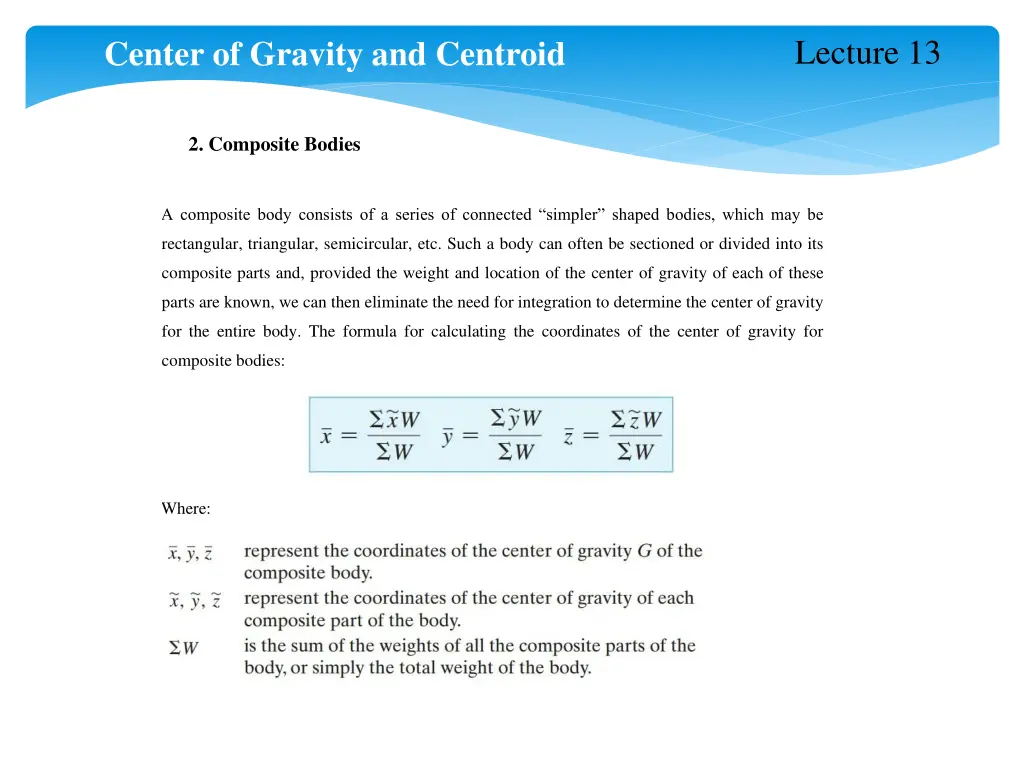
Understanding Center of Gravity and Centroid for Composite Bodies
Learn how to determine the center of gravity and centroid for composite bodies by analyzing simpler shaped components. Discover the formula for calculating the coordinates effectively without the need for integration. Practice examples to enhance your understanding.
Download Presentation

Please find below an Image/Link to download the presentation.
The content on the website is provided AS IS for your information and personal use only. It may not be sold, licensed, or shared on other websites without obtaining consent from the author. If you encounter any issues during the download, it is possible that the publisher has removed the file from their server.
You are allowed to download the files provided on this website for personal or commercial use, subject to the condition that they are used lawfully. All files are the property of their respective owners.
The content on the website is provided AS IS for your information and personal use only. It may not be sold, licensed, or shared on other websites without obtaining consent from the author.
E N D
Presentation Transcript
Lecture 13 Center of Gravity and Centroid 2. Composite Bodies A composite body consists of a series of connected simpler shaped bodies, which may be rectangular, triangular, semicircular, etc. Such a body can often be sectioned or divided into its composite parts and, provided the weight and location of the center of gravity of each of these parts are known, we can then eliminate the need for integration to determine the center of gravity for the entire body. The formula for calculating the coordinates of the center of gravity for composite bodies: Where:
EXAMPLE: Locate the centroid of the plate area shown in Fig. 917a.






















